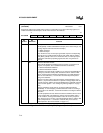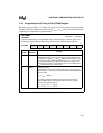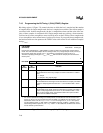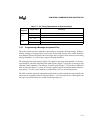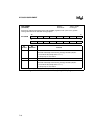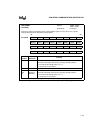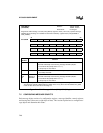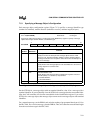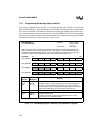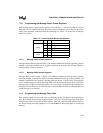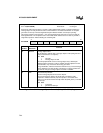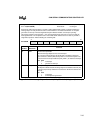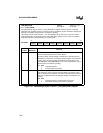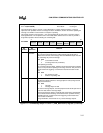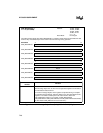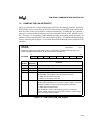
87C196CB SUPPLEMENT
7-22
7.5.2 Programming the Message Object Identifier
Each message identifier register (Figure 7-13) specifies the message’s identifier. For messages
with extended identifiers, write the identifier to bits ID28:0. For messages with standard identi-
fiers, write the identifier to bits ID28:18. Software can change the identifier during normal oper-
ation without requiring a subsequent device reset. Clear the MSGVAL bit in the corresponding
message control register 0 to prevent the CAN controller from accessing the message object while
the modification takes place, then set the bit to allow access.
CAN_MSG
x
ID0–3
†
x
= 1–15 (87C196CB)
Address:
Reset State:
1E
x
5H, 1E
x
4H,
1E
x
3H, 1E
x
2H
(
x
= 1–F)
Unchanged
Write the message object’s identifier to the CAN message object
x
identifier (CAN_MSG
x
ID0–3)
register. Software can change the identifier during normal operation. Clear the MSGVAL bit in the
corresponding CAN_MSG
x
CON0 register to prevent the CPU from accessing the message object,
change the identifier in CAN_MSG
x
ID0–3, then set the MSGVAL bit to allow access.
87C196CB 31 24
CAN_MSG
x
ID3 ID4 ID3 ID2 ID1 ID0 — — —
23 16
CAN_MSG
x
ID2 ID12 ID11 ID10 ID9 ID8 ID7 ID6 ID5
15 8
CAN_MSG
x
ID1 ID20 ID19 ID18 ID17 ID16 ID15 ID14 ID13
7 0
CAN_MSG
x
ID0 ID28 ID27 ID26 ID25 ID24 ID23 ID22 ID21
Bit
Number
Bit
Mnemonic
Function
31:27
23:16
12:8
ID4:0
ID12:5
ID17:13
Message Identifier 17:0
These bits hold the 18 least-significant bits of an extended identifier. If
you write an extended identifier to these bits, but specify a standard
identifier (XTD = 0) in the corresponding message object’s configuration
register (CAN_MSG
x
CFG), the CPU clears these bits (ID17:0).
26:24 — Reserved; for compatibility with future devices, write zeros to these bits.
15:13
7:0
ID20:18
ID28:21
Message Identifier 28:18
These bits hold either an entire standard identifier or the 11 most-
significant bits of an extended identifier.
†
This register is the same as the arbitration register in the standalone 82527 CAN peripheral.
Figure 7-13. CAN Message Object
x
Identifier (CAN_MSG
x
ID0–3) Register



